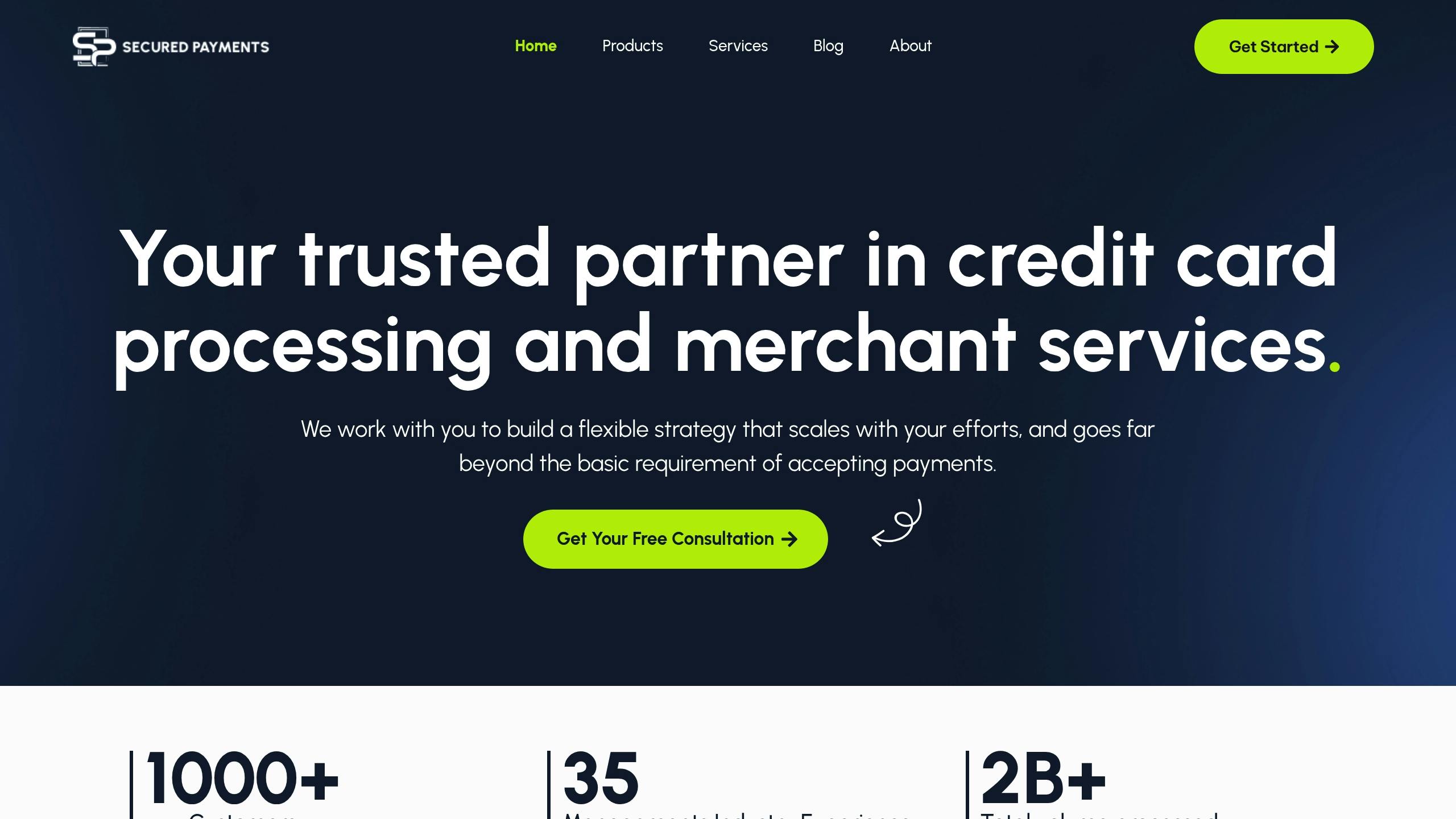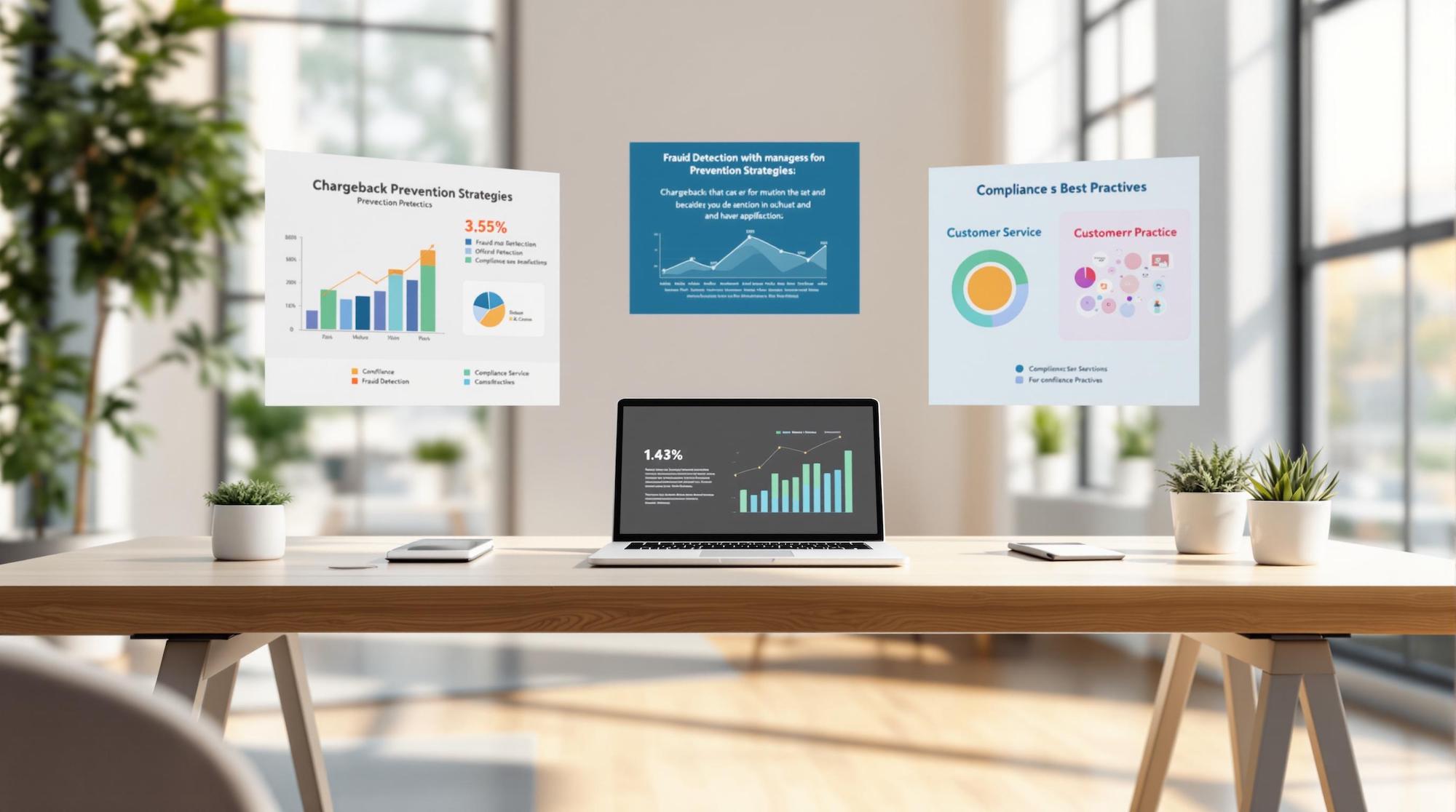Understanding Chargeback Prevention: Key Strategies for 2025
Chargebacks cost businesses time, money, and reputation. In 2025, rising online fraud, increased e-commerce transactions, and shifts in customer behavior make preventing chargebacks more critical than ever. Here’s what you need to know:
- Fraud Threats: AI-driven fraud like behavior mimicking and card testing is on the rise. Use advanced tools like real-time AI monitoring and multi-layer authentication to stay protected.
- Friendly Fraud: Disputes over legitimate purchases are growing. Clear billing details, transparent policies, and quick customer service help reduce this.
- Compliance: Follow payment rules (like Regulation E) and maintain strong documentation to avoid penalties.
Quick Tips for Prevention:
- Use tools like 3D Secure and CVV checks for added security.
- Implement real-time alerts with services like Ethoca or Verifi to resolve disputes early.
- Automate dispute management to save time and improve accuracy.
Staying proactive with smarter technology, better customer service, and strict compliance is key to reducing chargebacks and protecting your revenue in 2025.
Chargeback Prevention – 17 Ways to Avoid Chargebacks
Prevention Methods That Work
Stopping chargebacks requires a mix of smart technology, excellent customer service, and following the rules to the letter. Here’s how these elements come together to help prevent chargebacks.
Fraud Detection Systems
With fraud becoming more sophisticated, modern tools rely on real-time AI to stay ahead. Here’s how different layers of fraud detection work:
| Prevention Layer | Function | Impact |
|---|---|---|
| AI Monitoring | Tracks behavior in real time | Flags suspicious activity before it happens |
| Address Verification (AVS) | Matches billing address to card records | Helps catch unauthorized card use |
| 3D Secure | Adds risk-based authentication | Improves security without slowing checkout |
| CVV Verification | Confirms cardholder has the card | Stops misuse of stored card details |
Better Customer Service
Good customer service can prevent disputes from escalating into chargebacks. Here are some key practices:
- Clear Billing Descriptors: Make transaction details easy to recognize. For example, use “Merchant Name – Annual Software Subscription” instead of vague company names.
- Transparent Policies: Clearly display refund and return policies before purchase. Include details like who qualifies, time limits, required documents, and any fees.
- Fast Response Times: Use a centralized CRM to quickly address customer issues before they turn into disputes.
Following Payment Rules
Sticking to payment guidelines is a must to avoid chargebacks:
- Regulation E Compliance: For recurring payments, get proper authorization (written or electronic), clearly explain billing terms, provide simple cancellation steps, and keep detailed transaction records.
- Card Network Rules: Follow specific rules from card networks. This includes keeping solid documentation like authorization records, proof of delivery, customer communications, and service agreements.
sbb-itb-8c45743
New Chargeback Threats in 2025
AI Fraud Methods
Payment fraud is becoming more advanced as AI provides fraudsters with powerful tools. FINRA has raised alarms about how generative AI (GenAI) is being used in complex scams aimed at financial institutions.
Here are the main ways AI-driven fraud is showing up today:
| Attack Type | Description | Detection Signals |
|---|---|---|
| Behavior Mimicking | AI mimics legitimate customer behavior | Unusual purchase timing or transactions from multiple locations |
| Card Testing Automation | AI-powered bots test cards rapidly for validity | High volume of small transactions and frequent declines |
| Synthetic Identity Creation | Mixing real and fake data to create false identities | Mismatched customer details and unusual credit activity |
To combat these AI-driven threats, automating dispute management has become more important than ever. While AI gives fraudsters new tools, automation helps businesses respond faster and more effectively to disputes.
Automated Dispute Management
As fraud techniques evolve, merchants are turning to automated systems to handle disputes and minimize chargebacks. These systems bring several advantages:
- Real-Time Alerts: Tools like Ethoca and Verifi provide instant notifications for disputes.
- Smart Response Automation: Automatically gather evidence, prepare documentation, and submit responses within required deadlines.
- Data Analytics Integration: Use CRM data to analyze customer behavior and identify potential triggers for disputes.
To get the most out of these systems, businesses should prioritize the following:
| Focus Area | Implementation Strategy | Expected Outcome |
|---|---|---|
| Seamless Integration | Link dispute management tools with payment and CRM systems | Faster responses with reduced manual effort |
| Staff Training | Regularly train teams on system features and procedures | Improved accuracy and efficiency |
| Performance Monitoring | Measure key metrics like resolution times and success rates | Better dispute handling and overall results |
As fraud methods continue to change, businesses must keep improving their systems to stay ahead in chargeback prevention in 2025.
Prevention Tools Guide
Secured Payments

Secured Payments provides a payment processing platform designed to help businesses minimize chargebacks. Their system uses real-time transaction monitoring combined with AI-driven fraud detection to flag suspicious activity before it turns into a chargeback. This is especially helpful for businesses in industries with higher chargeback risks.
Here’s a quick look at what their chargeback prevention tools offer:
| Feature | What It Does | Why It Helps |
|---|---|---|
| Real-time Monitoring | Tracks transactions as they happen | Quickly identifies unusual activity |
| Multi-layer Authentication | Includes AVS and CVV checks | Cuts down on unauthorized transactions |
| High-risk Processing | Tailored services for risky industries | Adds extra security for vulnerable businesses |
| 24/7 Support | Around-the-clock help | Fast resolution for disputes |
In addition to these integrated features, other specialized tools can provide even more protection.
Additional Prevention Tools
To complement platforms like Secured Payments, businesses can use additional tools to further reduce chargeback risks. For instance, Address Verification Service (AVS) ensures billing details match, while two-factor methods like 3D Secure add another layer of defense against unauthorized transactions.
Real-time alert services are another great option for managing disputes before they escalate:
| Service Type | What It Does | Why It’s Useful |
|---|---|---|
| Ethoca Alerts | Sends instant dispute notifications | Helps merchants act quickly to resolve issues |
| Verifi CDRN | Offers early warnings about disputes | Stops disputes from becoming chargebacks |
| Tokenization | Encrypts and stores payment data securely | Protects sensitive customer information |
Using these tools not only strengthens your defense against chargebacks but also helps build solid evidence for disputes.
For businesses handling recurring payments, following Regulation E and using proper authorization forms is critical. These practices ensure compliance with payment rules and reduce the risk of disputes down the line.
Chargeback Prevention in 2025
To tackle chargebacks effectively in 2025, businesses need a layered approach that combines smart technology, clear communication with customers, and adherence to regulations. Fraud threats are evolving, and staying ahead requires constant vigilance.
Key Areas to Focus On
Chargeback prevention relies on three main areas:
| Focus Area | Key Elements | Benefits |
|---|---|---|
| Technology Use | Fraud detection tools, Real-time monitoring, Multi-layer authentication | Helps catch unauthorized transactions early and flag risky activities. |
| Customer Interaction | Clear billing details, Transparent policies, Easy-to-reach support | Prevents misunderstandings and resolves issues before they turn into disputes. |
| Regulatory Practices | Compliance with Regulation E, PCI DSS standards, Proper authorization | Ensures legal protection and lowers the risk of compliance-related disputes. |
These areas work together to create a strong defense against chargebacks. Monitoring chargeback trends and analyzing disputes can help businesses tackle weak spots as they arise.
A solid chargeback prevention strategy not only protects revenue but also strengthens customer trust. By using the right tools, training your team, and keeping thorough records, businesses can reduce risks and maintain smoother operations. Stay proactive to handle new challenges and keep chargebacks under control.




